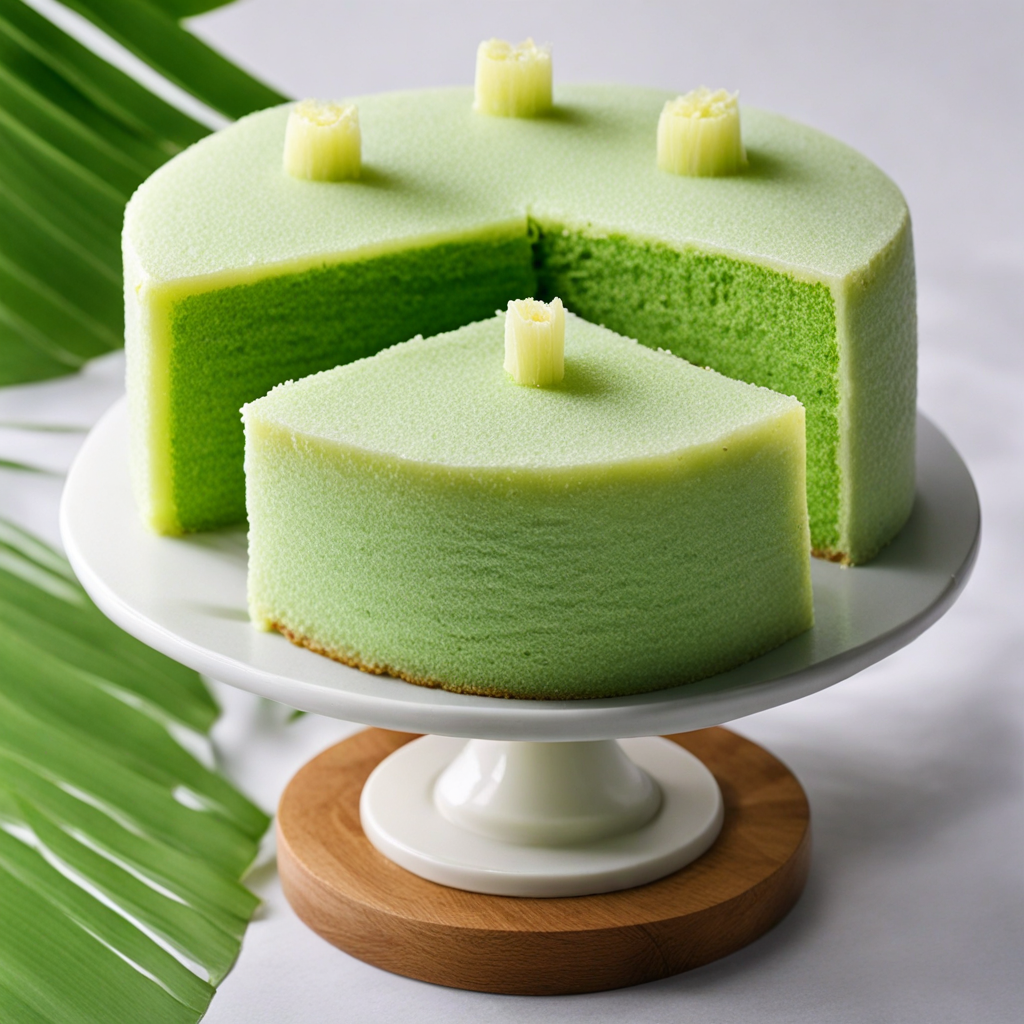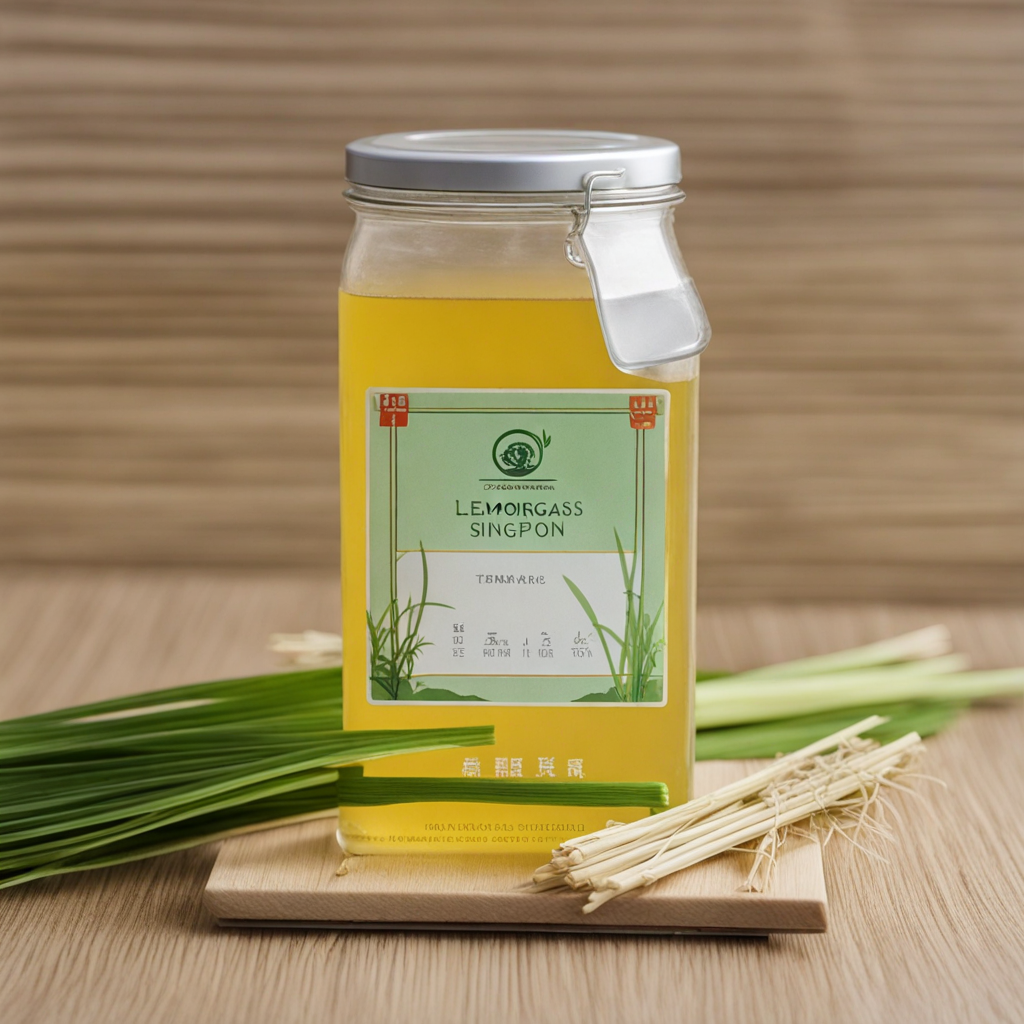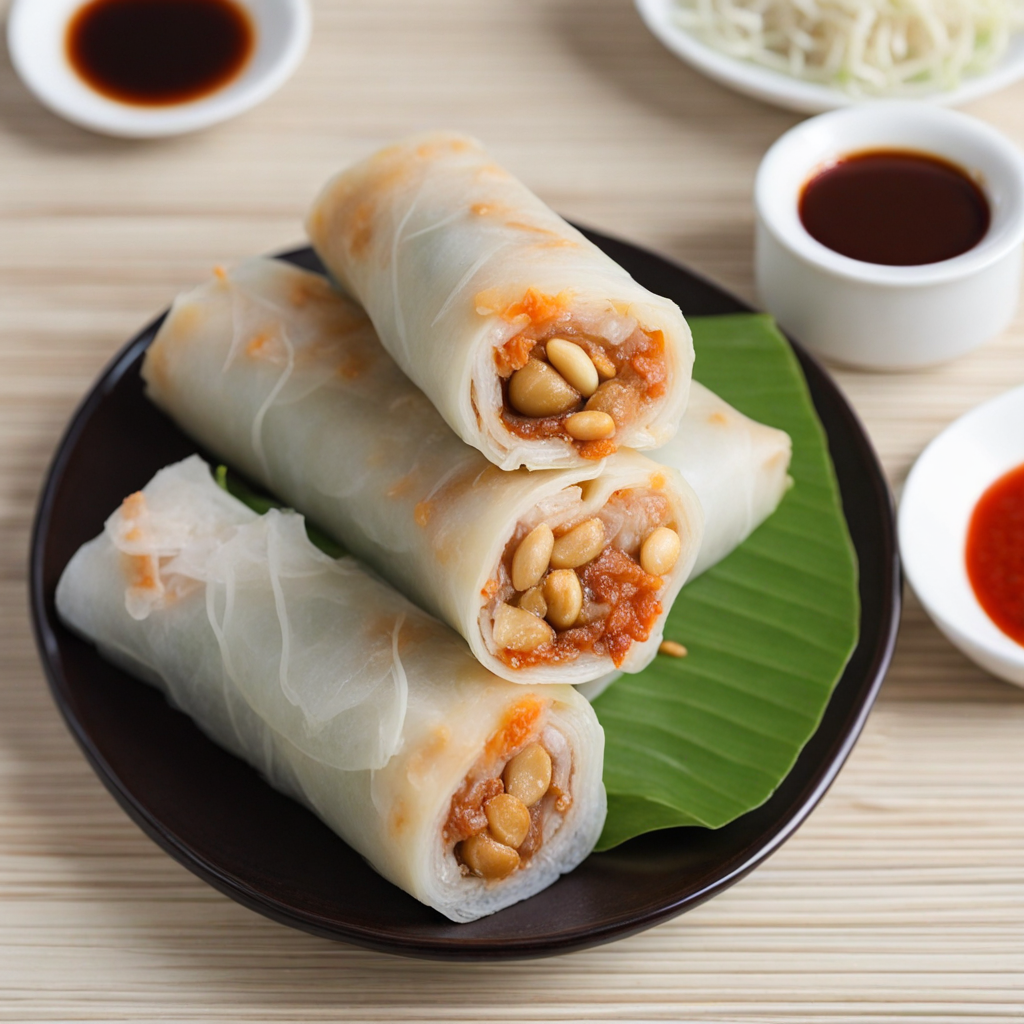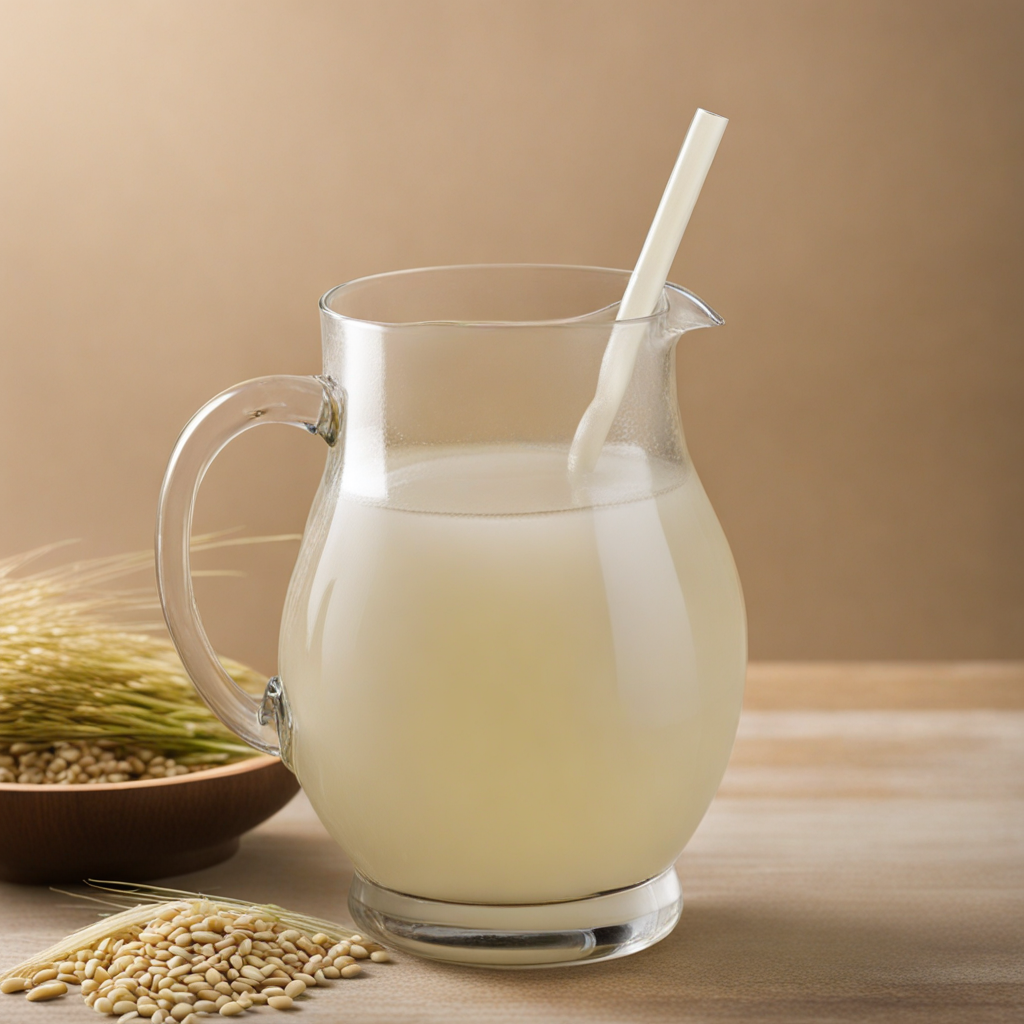Pandan Cake
Pandan Cake, a beloved dessert from Singapore, is a delightful treat that showcases the unique flavor of pandan leaves, often referred to as the "vanilla of Southeast Asia." This cake is characterized by its vibrant green hue, which comes from the juice extracted from fresh pandan leaves. The flavor is distinctly aromatic, with sweet, grassy notes that create a refreshing taste experience. The cake itself is light and fluffy, with a moist texture that melts in your mouth, making it a perfect accompaniment to afternoon tea or as a sweet finish to any meal. Traditionally, Pandan Cake is made using simple ingredients such as flour, sugar, eggs, coconut milk, and, of course, pandan juice. The combination of coconut milk adds a rich creaminess that complements the pandan flavor beautifully. The cake is often steamed rather than baked, which contributes to its soft and airy texture. Each bite offers a gentle sweetness balanced with a hint of saltiness, making it both satisfying and invigorating. In Singapore, Pandan Cake is not just a dessert; it represents a cultural connection to the region’s culinary heritage. It can be found in various forms, including layered cakes, chiffon cakes, and even as part of traditional kueh, a type of bite-sized snack. Whether enjoyed on its own or paired with a cup of tea, the enchanting taste of Pandan Cake invites you to explore the rich flavors of Southeast Asian cuisine, leaving a lasting impression that beckons another delicious bite.
How It Became This Dish
The History of Pandan Cake (班兰蛋糕) in Singapore #### Introduction Pandan cake, known as "班兰蛋糕" (bān lán dàn gāo) in Mandarin, is a vibrant, green-hued cake that has become a beloved staple in Singapore’s culinary landscape. This cake, characterized by its unique flavor derived from the pandan leaf, encapsulates the fusion of cultures that defines Singaporean cuisine. Its history is a reflection of the island nation’s multicultural heritage and evolving food traditions. #### Origins of Pandan and Its Cultural Significance Pandan, or Pandanus amaryllifolius, is a tropical plant native to Southeast Asia. The leaves of the pandan plant are celebrated for their aromatic properties and are commonly used in various Southeast Asian cuisines. In many cultures, pandan leaves are not only a culinary ingredient but also a symbol of good fortune and prosperity. In traditional Malay culture, pandan is associated with purity and is often used in rituals and celebrations. The use of pandan in sweets dates back centuries. In the Malay Archipelago, it is commonly found in dishes like "kuih," a type of bite-sized snack or dessert made from rice flour and coconut milk. The infusion of pandan flavor into desserts reflects the region's agricultural bounty and the importance of local ingredients in traditional cooking. In Singapore, the arrival of Chinese, Malay, and Indian communities also contributed to the diversity of culinary practices, giving rise to a unique synthesis of flavors and cooking techniques. #### Development of Pandan Cake The modern pandan cake, or chiffon cake, is believed to have its origins in the 20th century. The chiffon cake itself was developed in the United States in the 1920s by a baker named Harry Baker, who created a light, airy cake using vegetable oil. This innovative technique allowed for a cake that was both moist and fluffy, a departure from the traditional butter cakes that were common at the time. As the chiffon cake made its way to Southeast Asia, it began to incorporate local flavors, particularly pandan. The combination of the chiffon method with pandan created a cake that was not only visually striking but also infused with the sweet, fragrant essence of the pandan leaf. By the mid-20th century, pandan cake had become a popular dessert in Singapore, often served during festive occasions and gatherings. #### Cultural Significance in Singapore Pandan cake is more than just a dessert in Singapore; it is a symbol of the nation’s multicultural identity. The cake has become a beloved treat among the diverse ethnic communities, including Chinese, Malay, and Indian populations. It is frequently prepared during festivals such as Hari Raya, Chinese New Year, and Deepavali, reflecting its role in celebrating significant cultural events. The cake’s vibrant green color is often associated with auspiciousness, making it a popular choice for celebrations. In addition, pandan leaves are believed to have medicinal properties, adding a layer of traditional significance to the enjoyment of the cake. In Singaporean households, pandan cake is often a family affair, bringing people together through the shared experience of baking and enjoying this delightful treat. Many families have their own unique recipes, passed down through generations, contributing to a rich tapestry of culinary heritage. #### Evolution Over Time In recent years, pandan cake has evolved in response to contemporary culinary trends and the growing interest in local flavors. As Singapore positions itself as a gastronomic hub, chefs and home bakers alike have experimented with new variations of the traditional pandan cake. Innovative twists on the classic recipe have emerged, incorporating ingredients such as coconut cream, gula melaka (palm sugar), and even chocolate. The introduction of fusion desserts, like pandan-flavored macarons and cupcakes, has also gained popularity, appealing to a younger generation of food enthusiasts. The rise of social media has further contributed to the cake's evolution. Platforms like Instagram have allowed bakers to showcase their creations, inspiring a new wave of interest in traditional desserts. The visual appeal of pandan cake, with its striking green color and fluffy texture, makes it an ideal candidate for sharing online, leading to a resurgence of interest in this classic treat. #### The Role of Pandan Cake in Modern Singapore Today, pandan cake is widely available in bakeries, cafes, and restaurants across Singapore. It has become a must-try delicacy for both locals and tourists. Many bakeries pride themselves on their unique takes on the cake, offering variations that cater to diverse tastes, including gluten-free and vegan options. Culinary competitions and food festivals often feature pandan cake as a highlight, showcasing the creativity and skill of local bakers. Events like the Singapore Food Festival celebrate local flavors, and pandan cake has found its place as a star attraction, drawing attention to the rich culinary heritage of the nation. Moreover, as Singapore continues to embrace its identity as a global city, pandan cake has gained international recognition. It is increasingly featured in food blogs and culinary magazines, introducing this delicious dessert to audiences beyond Southeast Asia. The cake serves as a delicious ambassador of Singapore’s culinary identity, inviting those from around the world to experience the unique flavors of the region. #### Conclusion The history of pandan cake in Singapore is a testament to the nation’s rich cultural tapestry and culinary evolution. From its humble origins tied to the pandan plant to its status as a beloved dessert at celebrations, pandan cake reflects both tradition and innovation. As Singapore continues to grow as a culinary destination, the legacy of pandan cake endures, reminding us of the power of food to bring people together and celebrate cultural heritage. Whether enjoyed at home or in a bustling bakery, pandan cake remains a sweet symbol of Singapore’s vibrant food culture, inviting all to savor its delightful taste and rich history.
You may like
Discover local flavors from Singapore







